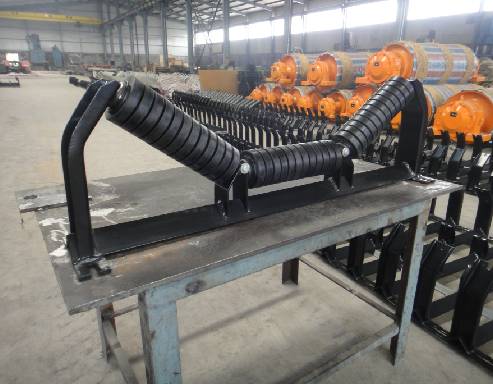 Afrikaans
Afrikaans  Albanian
Albanian  Amharic
Amharic  Arabic
Arabic  Armenian
Armenian  Azerbaijani
Azerbaijani  Basque
Basque  Belarusian
Belarusian  Bengali
Bengali  Bosnian
Bosnian  Bulgarian
Bulgarian  Catalan
Catalan  Cebuano
Cebuano  Corsican
Corsican  Croatian
Croatian  Czech
Czech  Danish
Danish  Dutch
Dutch  English
English  Esperanto
Esperanto  Estonian
Estonian  Finnish
Finnish  French
French  Frisian
Frisian  Galician
Galician  Georgian
Georgian  German
German  Greek
Greek  Gujarati
Gujarati  Haitian Creole
Haitian Creole  hausa
hausa  hawaiian
hawaiian  Hebrew
Hebrew  Hindi
Hindi  Miao
Miao  Hungarian
Hungarian  Icelandic
Icelandic  igbo
igbo  Indonesian
Indonesian  irish
irish  Italian
Italian  Japanese
Japanese  Javanese
Javanese  Kannada
Kannada  kazakh
kazakh  Khmer
Khmer  Rwandese
Rwandese  Korean
Korean  Kurdish
Kurdish  Kyrgyz
Kyrgyz  Lao
Lao  Latin
Latin  Latvian
Latvian  Lithuanian
Lithuanian  Luxembourgish
Luxembourgish  Macedonian
Macedonian  Malgashi
Malgashi  Malay
Malay  Malayalam
Malayalam  Maltese
Maltese  Maori
Maori  Marathi
Marathi  Mongolian
Mongolian  Myanmar
Myanmar  Nepali
Nepali  Norwegian
Norwegian  Norwegian
Norwegian  Occitan
Occitan  Pashto
Pashto  Persian
Persian  Polish
Polish  Portuguese
Portuguese  Punjabi
Punjabi  Romanian
Romanian  Russian
Russian  Samoan
Samoan  Scottish Gaelic
Scottish Gaelic  Serbian
Serbian  Sesotho
Sesotho  Shona
Shona  Sindhi
Sindhi  Sinhala
Sinhala  Slovak
Slovak  Slovenian
Slovenian  Somali
Somali  Spanish
Spanish  Sundanese
Sundanese  Swahili
Swahili  Swedish
Swedish  Tagalog
Tagalog  Tajik
Tajik  Tamil
Tamil  Tatar
Tatar  Telugu
Telugu  Thai
Thai  Turkish
Turkish  Turkmen
Turkmen  Ukrainian
Ukrainian  Urdu
Urdu  Uighur
Uighur  Uzbek
Uzbek  Vietnamese
Vietnamese  Welsh
Welsh  Bantu
Bantu  Yiddish
Yiddish  Yoruba
Yoruba  Zulu
Zulu guide rollers for conveyors
Guide Rollers for Conveyors An Essential Component for Enhanced Efficiency
In modern manufacturing and logistics, conveyors play a pivotal role in streamlining the movement of goods and materials. Among the most critical components of conveyor systems are guide rollers, which significantly enhance the efficiency and reliability of material handling. This article delves into the importance of guide rollers, their types, applications, and maintenance considerations to optimize their functionality.
Understanding Guide Rollers
Guide rollers are specially designed to assist in the alignment and stabilization of materials as they travel along a conveyor system. These cylindrical components serve as a guiding mechanism, ensuring that products remain on track and do not deviate from their intended path. By preventing misalignment, guide rollers help to minimize wear and tear on both the product and the conveyor itself, ultimately extending the lifespan of the entire system.
Types of Guide Rollers
Guide rollers come in various types, each engineered for specific applications to best suit different conveyor systems. The most common types include
1. Fixed Guide Rollers These are mounted at a set position along the conveyor to maintain a consistent pathway for products. Fixed guide rollers are ideal for straight conveyors where the direction of movement does not change.
2. Adjustable Guide Rollers These rollers can be repositioned to accommodate various product sizes and shapes. They allow for flexibility in conveyor designs, making them suitable for applications where product dimensions may vary frequently.
3. Crowned Guide Rollers Featuring a rounded surface, crowned rollers help to keep materials centered as they move. This design is particularly beneficial for rubber belts and assists in reducing slippage and misalignment.
4. Specialized Guide Rollers Certain industries may require specific guide rollers designed for unique operational environments. For instance, rollers made from materials that withstand extreme temperatures or corrosive substances may be necessary in chemical processing or food manufacturing.
Applications in Industry
guide rollers for conveyors

Guide rollers are utilized across numerous industries, including automotive, packaging, food and beverage, and logistics. In automotive manufacturing, guide rollers ensure that components move smoothly along assembly lines, reducing bottlenecks. In food processing, they play a vital role in maintaining hygiene and safety standards while transporting goods. In logistics, guide rollers help manage the flow of packages in warehouses, improving efficiency and accuracy in sorting and distribution.
Maintenance Considerations
To ensure the optimal performance of guide rollers, regular maintenance is indispensable. Neglecting maintenance can lead to system inefficiencies, increased wear on conveyor components, and unplanned downtime. Here are some best practices for maintaining guide rollers
1. Regular Inspection Conduct frequent inspections to check for signs of wear, misalignment, or damage. Early detection of issues can prevent larger problems from developing.
2. Cleaning Guide rollers should be kept clean to prevent the buildup of dirt and debris, which can cause friction and detract from their performance. Use appropriate cleaning agents that do not damage the rollers.
3. Lubrication Ensure that moving parts of the guide rollers are adequately lubricated according to the manufacturer’s specifications. This will minimize friction and extend the life of the rollers.
4. Alignment Checks Ensure that guide rollers are correctly aligned to maintain the intended path of the products. Misalignment can lead to increased wear and could potentially damage products.
5. Replacement If a guide roller shows excessive wear or damage, it should be replaced immediately to maintain optimal conveyor performance.
Conclusion
In summary, guide rollers are a vital component of conveyor systems that significantly enhance their functionality and efficiency. By understanding the various types, applications, and maintenance practices associated with guide rollers, industries can ensure smoother operations, increased productivity, and a longer lifespan for their conveyor systems. As manufacturing and logistics continue to evolve, the role of guide rollers will remain fundamental in achieving operational excellence.
-
Revolutionizing Conveyor Reliability with Advanced Rubber Lagging PulleysNewsJul.22,2025
-
Powering Precision and Durability with Expert Manufacturers of Conveyor ComponentsNewsJul.22,2025
-
Optimizing Conveyor Systems with Advanced Conveyor AccessoriesNewsJul.22,2025
-
Maximize Conveyor Efficiency with Quality Conveyor Idler PulleysNewsJul.22,2025
-
Future-Proof Your Conveyor System with High-Performance Polyurethane RollerNewsJul.22,2025
-
Driving Efficiency Forward with Quality Idlers and RollersNewsJul.22,2025





























